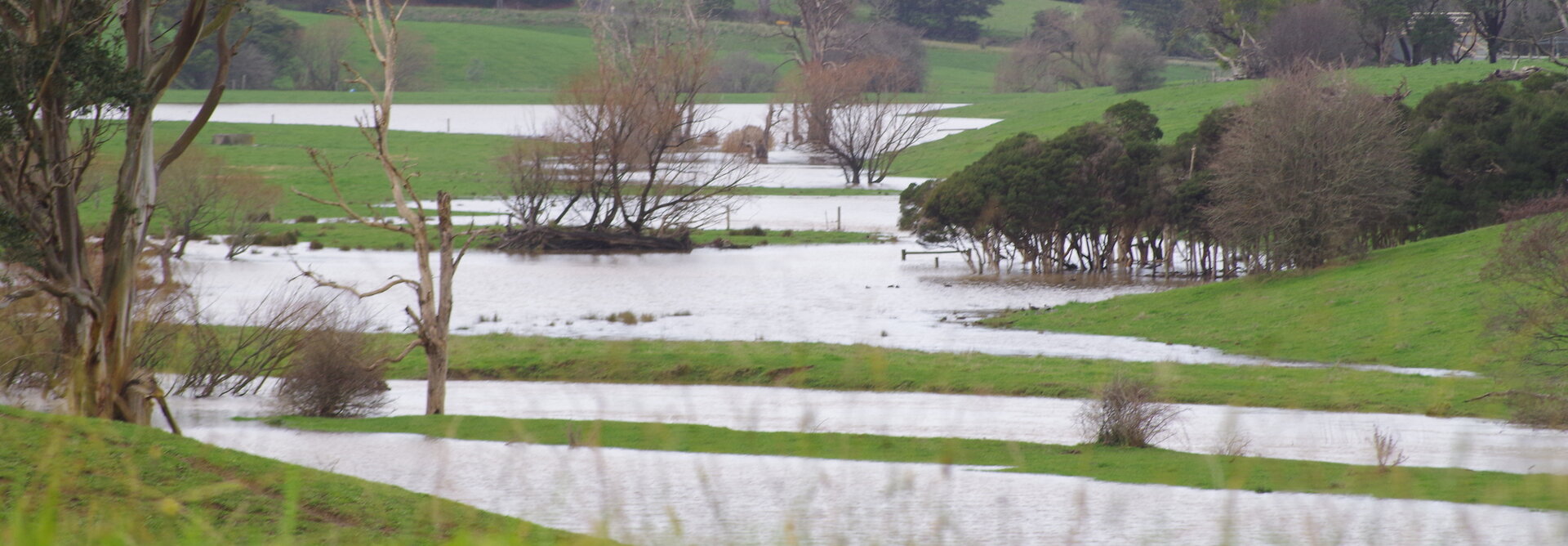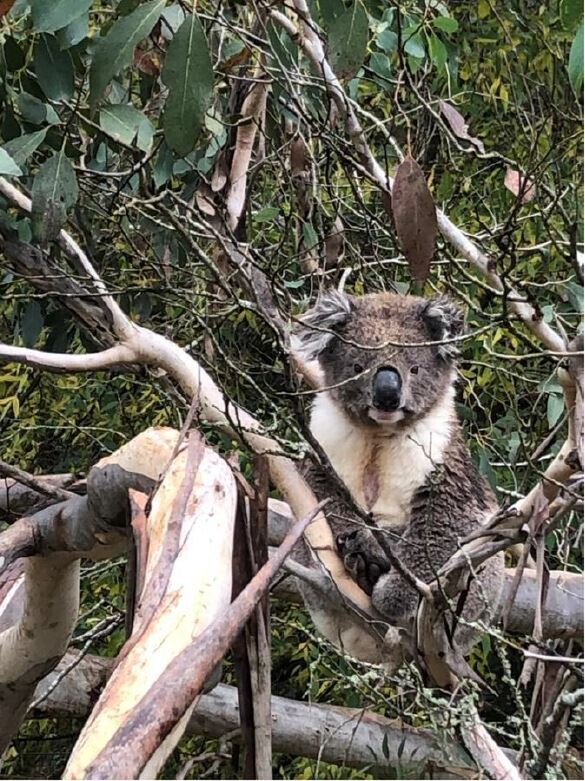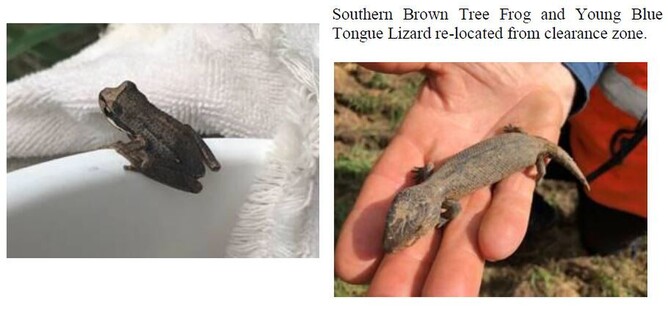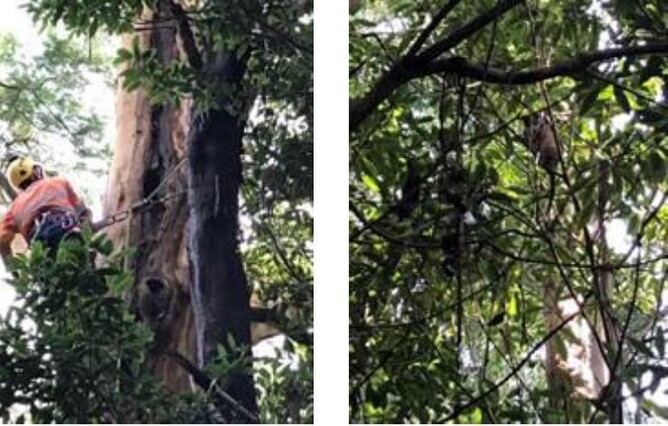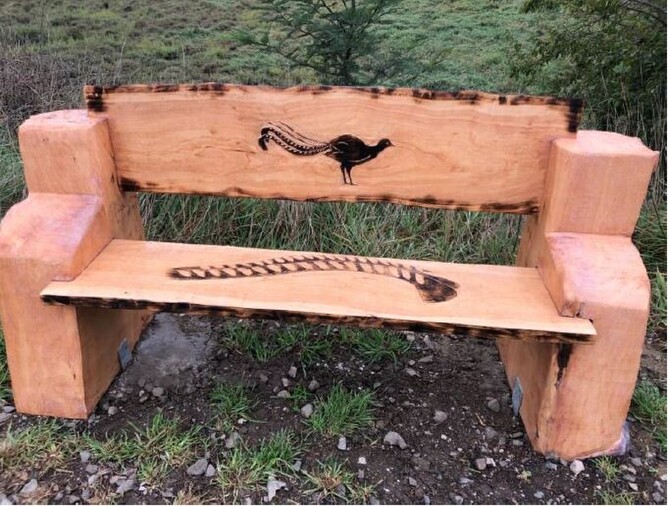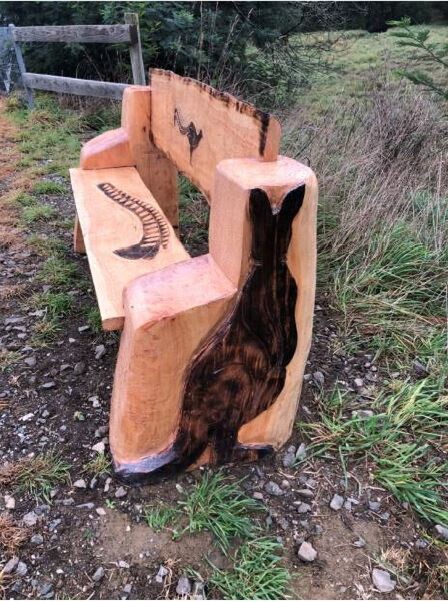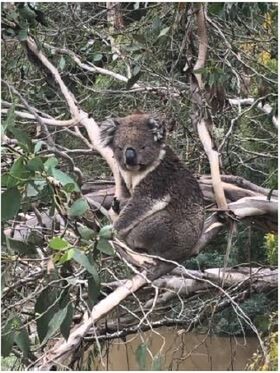We acknowledge the Traditional Owners of these lands and waters.
Peter and I took this photo of a large male koala on the middle bridge on May 2nd. There’s been a full time ecologist on site with the tree clearers to try and ensure any wildlife is safely re-located.
We live next to the Black Spur Creek Wetland project area and last week heard the distinct call of a Barking Owl(s). Two of our neighbours have heard it also. It was a first for us Walshes but apparently they have been sighted/heard occasionally around Koonwarra over the years. Barking Owls are listed as a Threatened Species in Victoria – there may be only about 50 pairs surviving. They require hollows for nesting, preferring live standing trees to dead ones. It takes 150-200 years for suitable hollows to form in eucalypts. Many of the owls’ prey species rely on hollows also. Hydrological features, such as streams and swamps, often form a conspicuous component of Barking Owl habitat. (Flora & Fauna Guarantee Action Statement No 116)
Major Road Projects Victoria
MRPV and CPB contractors have been keeping us updated.
The majority of tree clearing is complete; further tree clearing will be undertaken towards the end of the year in the warmer months.
During tree clearing preparations, a number of ringtail possums were relocated or left the tree of their own accord. A blue tongue lizard and southern brown tree frog were relocated and a koala left another tree of its own accord after a couple of days of unsuccessful coaxing by the project ecologist. (Thanks to Amy from CPB for photos below.)
Indigenous Designs (responsible for habitat restoration) have removed logs from the project site for use in the offset site. Because the floodplain is a no-go zone for heavy machinery, log size was constrained so that Indigenous Designs could handle them. (The No Go Zones have been established to protect in-stream Grayling fish, vegetation and cultural heritage values outside of the project boundary.) However we’ve been told that some of the logs have hollows and will make good habitat. Indigenous Designs are also looking to drill some holes in the end of a number of logs for native bee habitat and placing them into correct positions as habitat for skinks etc.
Indigenous Designs have been undertaking weed control around the wetlands.
CPB have also agreed to Indigenous Designs placing some of the mulch along the rail trail and in the offset site.
Water monitoring is underway upstream and downstream of the project, and air quality monitoring is being established. Some efforts to slow water flow and catch sediment can be seen from the rail trail.
Two project information signs will be erected along the Great Southern Rail Trail at the points where the new road will intersect with the rail trail.
Earthworks are commencing in the coming weeks.
During May and June MRPA are “working on establishing the site of the new alignment, creating access to the site, and preparing it for major construction. There will be changed traffic conditions and speed reductions in place with minor delays expected.”
Essentially they’ll have the traffic lights out again from next week Monday 8th June until Friday 19th July allowing one lane of alternating traffic during the day on weekdays. This will be 7am to 5.30 pm weather permitting. From Tuesday 23rd June, earthworks will also commence carting soil across the highway.
You might have noticed that there are signs along the Great Southern Rail Trail again – they will be installing barriers along the two worksites on the trail in the coming weeks to protect rail trail users.
NB You can subscribe to receive email road updates directly down the bottom of this webpage: https://roadprojects.vic.gov.a...
Climber inspecting hollow containing possum nest. A Ring Tail Possum can be seen in the foliage on the right. Photos below
The Great Southern Rail Trail will remain open for use during highway re-alignment works. The GSRT Committee will be handing over management to the South Gippsland Shire at the end of June. We’d like to thank them for all their work especially our local contact Dan Drummond. We’ve appreciated having someone with an overview and vision for the whole Rail Trail. Dan was responsible for siting, at the wetlands, a locally made seat funded by the now defunct Friends of the GSRT. Dan also did much of the clearing on the Rail Trail of fallen trees after the recent strong winds.
Nerrena Tarwin Valley Landcare group members have been planting thousands of seedlings on nearby properties, documenting the process with photos in the absence of group working bees. We’ve had zoom meetings including 2 strategy workshops with the South Gippsland Landcare Network. Unfortunately we have been concerned about illegal tree felling and firewood removal on roadsides especially near the corner of Caithness and Sewells Road.
Kate Walsh, Coordinator, Black Spur Creek Wetland Project, for Nerrena/Tarwin Valley Landcare Group. walshpk@gmail.com.
